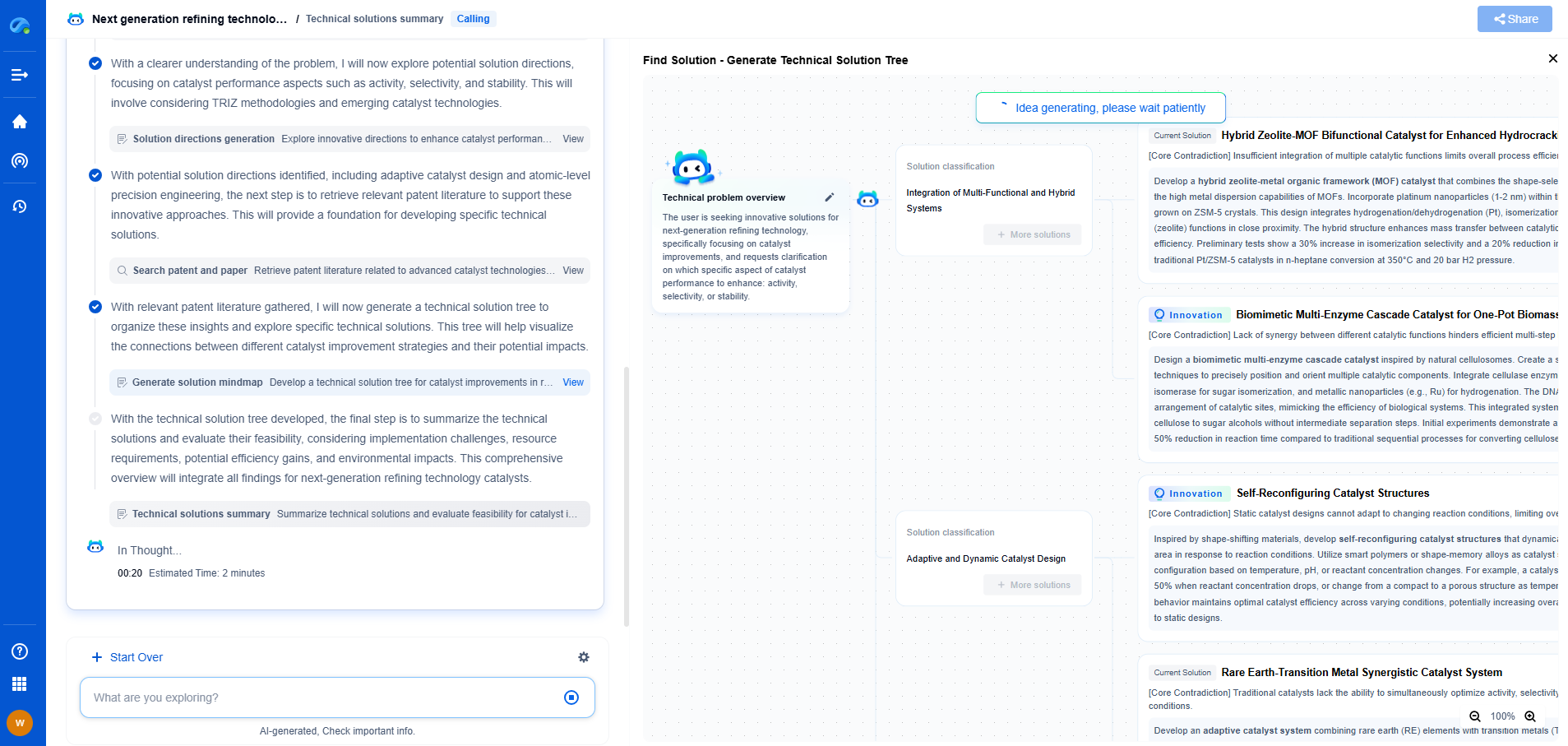What Is Electrical Power? Understanding Watts in Circuits
JUN 27, 2025 |
Electrical power is a fundamental concept in the field of electronics and electrical engineering, serving as the backbone of how we understand and utilize electricity. It dictates how devices operate, how energy is consumed, and how efficiently systems can deliver power to end-users. Let's delve into what electrical power really means and how watts play a critical role in circuits.
Defining Electrical Power
Electrical power refers to the rate at which electrical energy is transferred by an electric circuit. The unit of power in the International System of Units (SI) is the watt (W), named after James Watt, the Scottish engineer who made significant contributions to the development of the steam engine. Power in this context is calculated as the product of voltage (V) and current (I), expressed in the formula P = V x I. This formula indicates that for power to be transmitted, there needs to be a flow of electric charge (current) through a potential difference (voltage).
The Role of Watts in Circuits
Watts measure the rate of energy conversion or transfer with respect to time. In electrical circuits, watts essentially determine how much work can be done by a circuit component. For example, a light bulb rated at 60 watts uses 60 joules of energy per second. The higher the wattage, the more energy the device consumes or produces over time. Understanding the wattage of devices and components in a circuit helps in calculating the total energy consumption and ensures that the circuit operates within safe limits.
Voltage, Current, and Resistance: The Relationship
To fully understand watts in circuits, one must consider the relationship between voltage, current, and resistance. Ohm's Law, which states that V = I x R (where R is resistance), helps us understand how these elements interact. By manipulating this relationship, we can derive expressions that relate power to resistance, such as P = I² x R or P = V²/R. These relationships are crucial when designing circuits, as they help determine the appropriate components needed to achieve desired outcomes in terms of power delivery and efficiency.
Applications of Electrical Power
Electrical power is pivotal in a multitude of applications, ranging from residential to industrial settings. In homes, power ratings indicate how much electricity appliances use, impacting energy costs and efficiency. In industrial contexts, understanding power is essential for the optimization of motors, generators, and other machinery that drive production processes. Furthermore, in the realm of renewable energy, measuring power output from sources like solar panels and wind turbines is crucial for assessing their viability and performance.
Efficiency and Power Factor
Efficiency in the context of electrical power refers to how well a system converts input energy into useful output energy. No system is perfectly efficient, and some energy is always lost as heat or other forms of energy. The power factor, which is the ratio of real power (measured in watts) to apparent power (measured in volt-amperes), is an important concept when considering efficiency. A power factor closer to 1 indicates a more efficient system, as more of the power supplied is being used effectively.
Conclusion
In summary, electrical power is a key concept that helps us understand how electricity is used and managed in circuits and systems. Watts, as the unit of power, provide a measure of energy conversion and consumption, which is crucial for designing efficient and effective electrical systems. By grasping the relationships between voltage, current, resistance, and power, one can better appreciate the complexities and applications of electrical power in both everyday life and advanced technological contexts. Understanding these principles not only aids in practical applications but also lays the groundwork for innovations in energy management and conservation.
Empower Your Breakthroughs in Basic Electric Components with Patsnap Eureka
From resistors, capacitors, and inductors to fuses, connectors, superconductors, and nano-scale materials—basic electric elements may be the building blocks of modern electronics, but the innovation behind them is anything but simple. As device miniaturization accelerates and materials science pushes new frontiers, R&D and IP teams face increasing complexity in staying on top of technical advancements, patent activity, and competitive landscapes.
Patsnap Eureka, our intelligent AI assistant built for R&D professionals in high-tech sectors, empowers you with real-time expert-level analysis, technology roadmap exploration, and strategic mapping of core patents—all within a seamless, user-friendly interface.
🔧 Whether you’re optimizing energy storage, improving thermal resistance, or creating the next leap in circuit efficiency, Patsnap Eureka is your AI copilot for high-efficiency, high-precision R&D and IP strategy.
👉 Experience how Patsnap Eureka can revolutionize your R&D and IP strategy. Request a demo today and power up your next breakthrough.
- R&D
- Intellectual Property
- Life Sciences
- Materials
- Tech Scout
- Unparalleled Data Quality
- Higher Quality Content
- 60% Fewer Hallucinations
Browse by: Latest US Patents, China's latest patents, Technical Efficacy Thesaurus, Application Domain, Technology Topic, Popular Technical Reports.
© 2025 PatSnap. All rights reserved.Legal|Privacy policy|Modern Slavery Act Transparency Statement|Sitemap|About US| Contact US: help@patsnap.com

